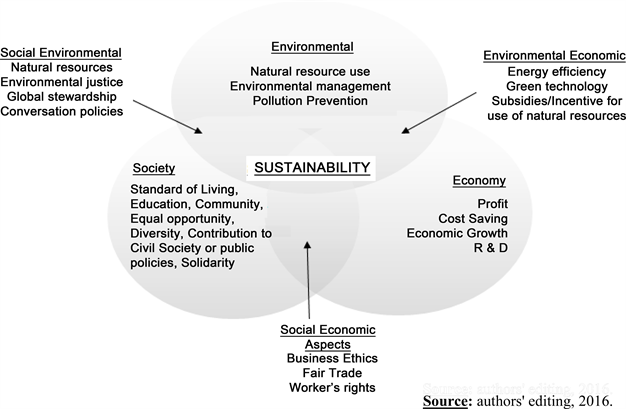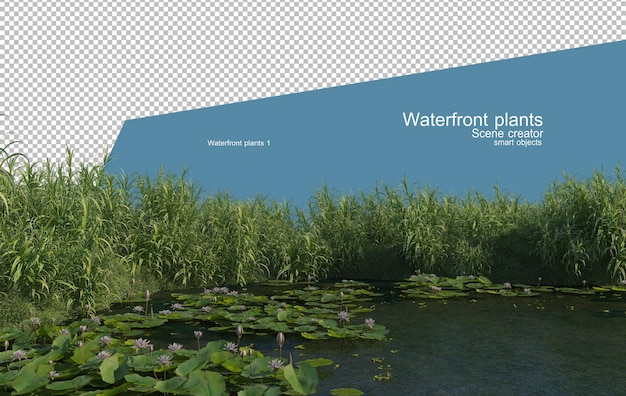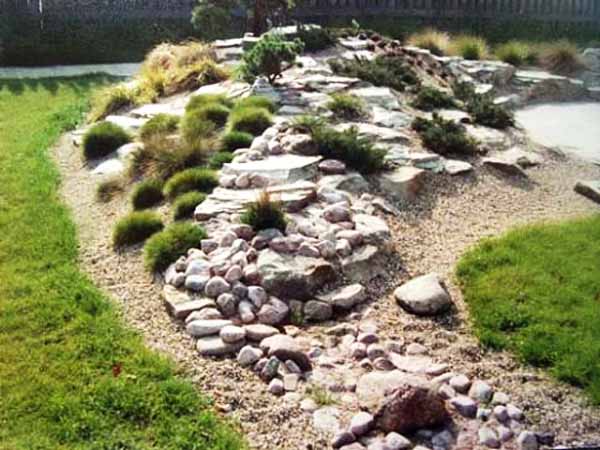
Introduction: A Green Revolution in Our Backyards
The world is changing, and with it, our understanding of responsibility. We’re no longer just consumers; we’re stewards of the planet. This shift is especially evident in the realm of landscaping, where the traditional methods of waste disposal are giving way to a more conscious approach: sustainable landscape material recycling. This isn’t just a trend; it’s a necessity. It’s about minimizing our environmental footprint, conserving precious resources, and creating landscapes that are not only beautiful but also beneficial to the ecosystem.
Imagine a world where the debris from a demolished patio doesn’t end up in a landfill, but instead becomes the foundation for a new, vibrant garden. Picture chipped concrete being reborn as gravel pathways, or pruned branches transforming into nutrient-rich mulch. This is the power of sustainable landscape material recycling, and it’s a movement that’s gaining momentum across the globe.
This comprehensive guide will delve into the world of sustainable landscape material recycling. We’ll explore the ‘why’ and the ‘how,’ providing you with the knowledge and inspiration to embrace this eco-friendly practice in your own outdoor spaces. Get ready to discover how you can transform your landscape into a haven of sustainability, one recycled material at a time.
Why Sustainable Landscape Material Recycling Matters
Before we dive into the practicalities, let’s understand the ‘why.’ Why is sustainable landscape material recycling so crucial? The answer lies in a confluence of environmental, economic, and aesthetic benefits.
Environmental Advantages: Protecting Our Planet
The environmental benefits are perhaps the most compelling. Landfills are overflowing, and the waste from landscaping projects contributes significantly to this problem. By recycling landscape materials, we:
- Reduce Landfill Waste: Diverting materials from landfills means less space is consumed, and the lifespan of these facilities is extended.
- Conserve Natural Resources: Recycling reduces the need to extract virgin materials, like quarrying stone or harvesting timber. This, in turn, protects natural habitats and reduces the impact of resource extraction.
- Lower Greenhouse Gas Emissions: The manufacturing of new materials requires significant energy, often generated from fossil fuels. Recycling reduces these emissions, mitigating climate change. Transportation of materials also contributes to emissions; recycling locally reduces this impact.
- Protect Water Resources: Quarrying and manufacturing processes can pollute water sources. Recycling minimizes these risks.
Economic Benefits: Saving Money and Creating Opportunities
Sustainable practices often come with surprising economic advantages:
- Cost Savings: Recycling can be more affordable than purchasing new materials. Many recycled materials are available at a lower cost.
- Job Creation: The recycling industry creates jobs in collection, processing, and manufacturing.
- Increased Property Value: Eco-friendly landscaping can enhance property values, appealing to environmentally conscious buyers.
- Reduced Disposal Costs: By recycling, you avoid or reduce landfill tipping fees.
Aesthetic and Practical Benefits: Beautiful and Functional Landscapes
Beyond the environmental and economic advantages, recycling can also enhance the beauty and functionality of your landscape:
- Unique Aesthetics: Recycled materials often have unique textures and appearances, adding character and visual interest to your landscape.
- Improved Soil Health: Using composted yard waste and other organic materials improves soil structure, water retention, and nutrient content.
- Sustainable Design: Recycling encourages innovative landscape designs that embrace sustainability.
Common Landscape Materials That Can Be Recycled
Now that we understand the ‘why,’ let’s explore the ‘what.’ What materials can be recycled in your landscape? The good news is, a vast array of materials can be given a second life.
Organic Materials: Nature’s Gift of Renewal
Organic materials are the backbone of a healthy landscape and are readily recyclable:
- Yard Waste: This includes grass clippings, leaves, branches, and other plant debris. It can be composted or chipped to create mulch.
- Wood: Trees and branches can be chipped for mulch, used for building raised beds, or repurposed into furniture.
- Food Scraps: Certain food scraps can be composted, enriching your soil.
- Stumps: Stumps can be ground down and used as mulch or removed by a professional.
Hardscape Materials: Reimagining the Built Environment
Hardscape materials, the non-organic elements of your landscape, are also prime candidates for recycling:
- Concrete: Broken concrete can be crushed and used as a base for pathways, driveways, or as aggregate in new concrete.
- Brick and Stone: Old bricks and stones can be reused for pathways, walls, or decorative features.
- Asphalt: Asphalt can be recycled and used in new paving projects.
- Metal: Fencing, old tools, and other metal items can be recycled.
- Plastic: Pots, containers, and some landscape edging can be recycled.
How to Recycle Landscape Materials: A Step-by-Step Guide
Recycling landscape materials isn’t always as simple as tossing something in a bin. Here’s a guide to help you navigate the process effectively.
1. Assess Your Materials: Know What You Have
The first step is to identify the materials you have and determine their potential for recycling. Separate your materials into categories (organic, hardscape, metal, etc.) for easier management.
2. Research Local Recycling Options: Find Your Resources
Availability of recycling services varies by location. Research local options, including:
- Local Recycling Centers: These centers often accept a wide range of materials.
- Composting Facilities: Many municipalities offer composting services for yard waste.
- Landscape Material Suppliers: Some suppliers accept materials for recycling or offer recycled products.
- Private Recycling Companies: Search online for companies specializing in landscape material recycling.
3. Prepare Your Materials: Get Ready for Recycling
Proper preparation is crucial for successful recycling. Follow these guidelines:
- Clean Materials: Remove any contaminants, such as dirt, debris, or non-recyclable materials.
- Sort Materials: Separate materials into appropriate categories.
- Break Down Materials: Break down large items (like concrete slabs) into manageable sizes.
4. Transport Your Materials: Get Them to the Right Place
Consider the best way to transport your materials:
- DIY Transportation: Use a truck, trailer, or your own vehicle.
- Rental Options: Rent a truck or dumpster if you have a large volume of materials.
- Professional Services: Hire a company to collect and transport your materials.
5. Embrace DIY Recycling: Get Creative
Beyond sending materials to recycling facilities, explore DIY recycling options:
- Composting: Create your own compost pile for yard waste and food scraps.
- Mulching: Chip branches and use them as mulch.
- Reusing Materials: Repurpose old bricks, stones, and other materials in new landscape projects.
Creative Ways to Utilize Recycled Landscape Materials
Recycling isn’t just about getting rid of waste; it’s about finding new opportunities. Here are some creative ways to use recycled landscape materials:
For Organic Materials: Nurturing Your Garden
- Compost: Create nutrient-rich compost to improve soil quality and reduce the need for chemical fertilizers.
- Mulch: Use wood chips, shredded bark, or other organic mulches to suppress weeds, retain moisture, and improve soil health.
- Living Mulch: Plant ground cover to act as a living mulch, reducing erosion and providing habitat for beneficial insects.
For Hardscape Materials: Building and Designing
- Pathways and Walkways: Use crushed concrete, gravel, or recycled brick to create attractive and functional pathways.
- Retaining Walls: Build retaining walls with recycled stone, brick, or concrete blocks.
- Raised Garden Beds: Construct raised beds from recycled wood or other materials.
- Decorative Features: Incorporate recycled materials into decorative features like fountains, benches, or sculptures.
Tips for Successful Sustainable Landscape Material Recycling
Here are some tips to ensure your recycling efforts are successful:
- Plan Ahead: Consider recycling options before starting a landscaping project.
- Choose Recycled Materials: When purchasing new materials, opt for those made from recycled content.
- Educate Yourself: Stay informed about local recycling regulations and options.
- Partner with Professionals: Work with landscape designers and contractors who prioritize sustainability.
- Embrace the Long-Term View: Sustainable practices are an investment in the future.
Common Mistakes to Avoid
Even with the best intentions, mistakes can happen. Here are some common pitfalls to avoid:
- Ignoring Local Regulations: Ensure you comply with local recycling guidelines.
- Contaminating Materials: Keep materials clean and free of non-recyclable items.
- Underestimating Costs: Factor in the cost of recycling when planning your budget.
- Lack of Planning: Plan your recycling efforts from the beginning of your project.
- Not Exploring DIY Options: Don’t overlook the potential of DIY recycling.
The Future of Sustainable Landscaping: A Vision for Tomorrow
Sustainable landscape material recycling is not just a trend; it’s a crucial part of the future of landscaping. As awareness grows, we can expect to see:
- Increased Innovation: New technologies and methods for recycling and repurposing materials.
- Wider Availability: More recycling services and options in different regions.
- Greater Consumer Demand: Increased demand for sustainable products and practices.
- Stronger Regulations: More government incentives and regulations to encourage recycling.
- A More Beautiful and Healthy Planet: Ultimately, a world where our landscapes are both aesthetically pleasing and environmentally responsible.
Conclusion: Embracing a Greener Tomorrow
Sustainable landscape material recycling is a powerful way to reduce our environmental impact, conserve resources, and create beautiful, functional landscapes. By embracing these practices, you’re not just improving your backyard; you’re contributing to a healthier planet for future generations. So, take the first step, explore your options, and join the green revolution in your own outdoor space. The future of landscaping is sustainable, and it starts with you.


